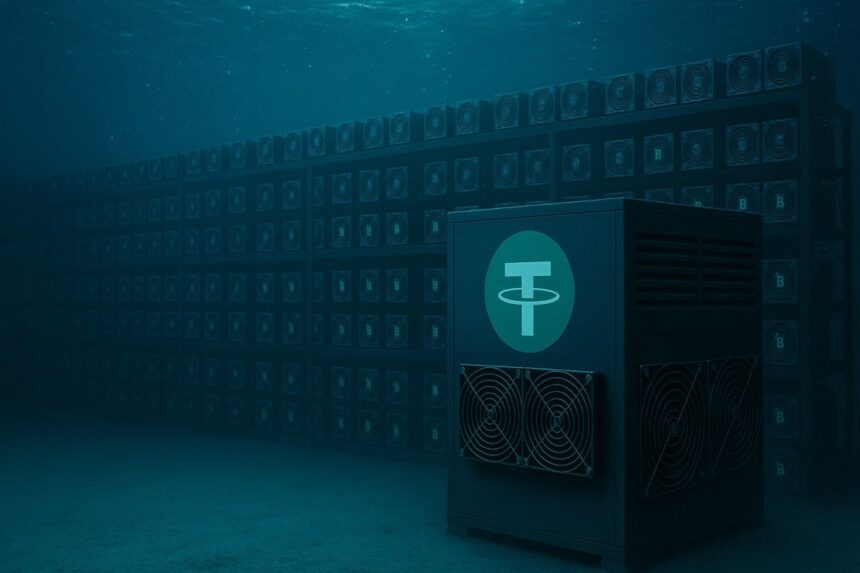Tether, the largest company in the digital asset sector, announced on April 14, 2025, a significant initiative to support the decentralization of Bitcoin mining. The company plans to distribute both its existing hashrate and future hashrate on the OCEAN mining pool, an emerging entity that stands out for its commitment to decentralization and for being led by the long-time Bitcoin Core developer, Luke Dashjr.
The decision marks a further step in Tether’s philosophy, long committed to promoting transparency, resilience, and open access within and outside the cryptocurrency ecosystem.
Bitcoin mining: why Tether focuses on OCEAN
The strategic value of OCEAN lies entirely in its structure: the pool allows miners to generate their own block templates, drastically reducing dependence on centralized intermediaries, thanks to the use of the open-source protocol DATUM. These features enable an increase in censorship resistance, a fundamental priority for maintaining the integrity of the Bitcoin network.
To integrate this technology within its operations, Tether will employ DATUM Gateway, a software designed to ensure high performance even in environments with limited or unstable internet connections. This approach not only enhances technical efficiency but also paves the way for global expansion, with particular focus on underserved areas.
A global, decentralized, and accessible infrastructure
The words of Tether’s CEO, Paolo Ardoino, encapsulate the essence of the project: «As a company oriented towards financial freedom and open access, we believe that supporting decentralization in Bitcoin mining is essential for the long-term sustainability of the network». The choice of OCEAN, he adds, aligns perfectly with the decentralized mining activities already underway by the company and with its declared mission to defend Bitcoin from centralizing forces.
“`html
With the deployment of the DATUM Gateway in various areas of the world, including rural and underserved regions such as some areas of Africa, Tether aims to enhance mining operations on a global scale. The technology indeed allows for the generation of block templates on-site and connects thousands of devices with minimal latency, improving performance and reliability worldwide.
“`
A choice resulting from technical analysis
According to Giv Zanganeh, vice president of Tether’s Mining & Energy division, the decision to adopt OCEAN was the result of «months of thorough technical evaluation». Zanganeh states that the DATUM protocol is the option most consistent with the decentralized philosophy of Bitcoin and allows Tether to operate in areas with poor connectivity, thanks to a software architecture capable of maintaining stable connectivity even in extreme conditions.
This choice represents a scalable model for future implementations, consolidating Tether’s mining infrastructure in a distributed, adaptable manner and in line with the fundamental principles of Bitcoin.
Tether embraces the decentralized vision of OCEAN’s Bitcoin mining
For its part, OCEAN has enthusiastically welcomed Tether’s involvement. The president Mark Artymko spoke of «an alliance that strengthens the shared belief that financial inclusion and decentralization are inseparable». The founder and CTO, Luke Dashjr, also emphasized the strategic importance of the collaboration, considering it a confirmation of the value of open-source tools and the centrality of censorship resistance in the future developments of Bitcoin.
OCEAN is establishing itself as a point of reference for those seeking alternatives to centralized mining models, contributing to distribute computational power among a larger number of participants in the network.
Africa at the center of expansion
In parallel with the investment in decentralized mining, Tether strengthens its presence in the African territory, not only with infrastructure but also through digital education. The recent collaboration with Quidax, a crypto platform active in Nigeria and other African countries, demonstrates the intention to provide local populations with concrete tools to access the world of cryptocurrencies.
The initiative aims to reach millions of people with training programs focused on the understanding and conscious use of digital assets, particularly Bitcoin and stablecoin. An investment that reflects Tether’s vision: a global, inclusive adoption founded on knowledge.
A long-term decentralization model
The plan announced by Tether marks a key step in the process of evolution of the Bitcoin mining industry. The combination of advanced technology, ethical principles of decentralization, and commitment to financial inclusion offers a concrete roadmap for the future of the network.
By bringing its computing power to OCEAN, Tether positions itself as one of the driving forces in building a more equitable, open, and resilient Bitcoin infrastructure, in a historical period where the challenges related to centralization are becoming increasingly evident.
The adoption of the DATUM protocol represents an opportunity not only technological but also social: allowing miners in challenging contexts to actively participate in the Bitcoin network means redistributing power and sustainability, two concepts often overlooked in the world of cryptocurrencies. With this move, Tether asserts its role as a leader not only by market capitalization but also by vision.











